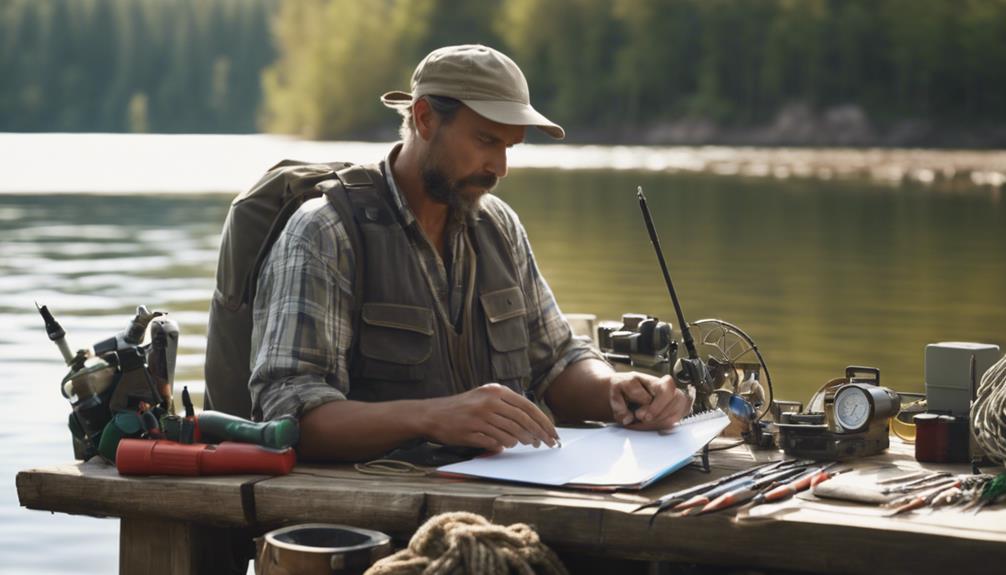Fishing is not just a hobby; for many, it’s a way of life. Understanding what fish season it is can significantly impact your fishing success. Each species of fish has its own seasonal patterns influenced by water temperature, spawning cycles, and environmental changes. In this blog post, we will explore the various fishing seasons, the best times to catch specific fish, and tips for maximizing your fishing experience.
The Importance of Knowing What Fish Season It Is
Knowing what fish season it is can be the difference between a successful fishing trip and a disappointing one. Fish are highly influenced by seasonal changes, which affect their behavior, feeding patterns, and spawning. For instance, some fish species are more active during specific months, while others may be more challenging to catch. By understanding the seasonal patterns of different fish species, anglers can plan their trips more effectively and increase their chances of landing a big catch.
Spring Fishing: A Time of Renewal
Spring is often considered one of the best times for fishing. As water temperatures begin to rise, fish become more active after the colder months. Species such as bass, crappie, and trout are particularly easy to catch during this season. Bass tend to move into shallower waters for spawning, making them accessible to anglers. Crappie fishing is also excellent in spring as they congregate near spawning sites. Understanding what fish season it is during spring can lead to fruitful fishing outings.
Summer Fishing: High Temperatures, High Activity
As temperatures peak in the summer months, fishing can still be rewarding. Many species, including catfish, walleye, and pike, are highly active during this time. Catfish are often caught at night when the water is cooler, while walleye tend to be more active during dawn and dusk. It’s essential to adapt your fishing techniques to suit the warmer weather conditions and fish behaviors. For instance, using lighter tackle and fishing deeper waters can yield better results during the hot summer months.
Fall Fishing: A Bounty Before Winter
Fall is regarded as one of the prime fishing seasons, particularly for species like salmon and trout. As temperatures begin to drop, fish prepare for the winter months by feeding aggressively. This is the time when anglers can witness salmon runs, where fish migrate upstream to spawn. Understanding what fish season it is during the fall can help you capitalize on the increased activity of these species. Additionally, the changing leaves and cooler weather can make for a beautiful fishing experience.
Winter Fishing: Embracing the Chill
Winter fishing may not be for everyone, but it can be incredibly rewarding. Species such as ice fishing for perch and northern pike are popular during this time. Coldwater fish tend to slow down, but they can still be caught with the right techniques and equipment. Ice fishing requires special gear, including ice augers, shelters, and warm clothing. Knowing what fish season it is during winter will help you prepare adequately for a successful outing, whether you’re fishing through the ice or in open water.
Regional Variations in Fish Seasons
Understanding what fish season it is can vary greatly depending on your location. Different regions experience different climates, which can affect fish behavior and spawning times. For example, southern states may have longer fishing seasons due to milder winters, while northern regions may experience shorter seasons with distinct ice fishing periods. It’s crucial to research local fishing regulations and seasonal patterns specific to your area. This knowledge will help you determine not only what fish season it is but also the best practices for fishing in your region.
Tips for Maximizing Your Fishing Experience
To get the most out of your fishing trips, consider these helpful tips. First, stay informed about local fishing reports and conditions to understand what fish season it is and which species are active. Invest in good fishing gear tailored to the specific fish you’re targeting during the season. Additionally, familiarize yourself with local regulations and catch limits to ensure sustainable fishing practices. Finally, don’t hesitate to ask local anglers or join fishing communities to share insights and strategies for successful fishing.
Conclusion: Timing is Everything in Fishing
Ultimately, understanding what fish season it is is crucial for any angler looking to improve their catch rates. Each season presents unique opportunities and challenges, and being aware of these can greatly enhance your fishing adventures. By knowing the characteristics of different fish species, adapting techniques to seasonal changes, and staying informed about local conditions, you can ensure a successful fishing experience year-round. So, gear up, check the calendar, and prepare for your next fishing trip—because the right season can lead to great stories and even greater catches!
By using this comprehensive guide, you can improve your fishing skills and knowledge. Remember, fishing is not just about the catch; it’s about enjoying nature and spending time with friends and family. Happy fishing!
